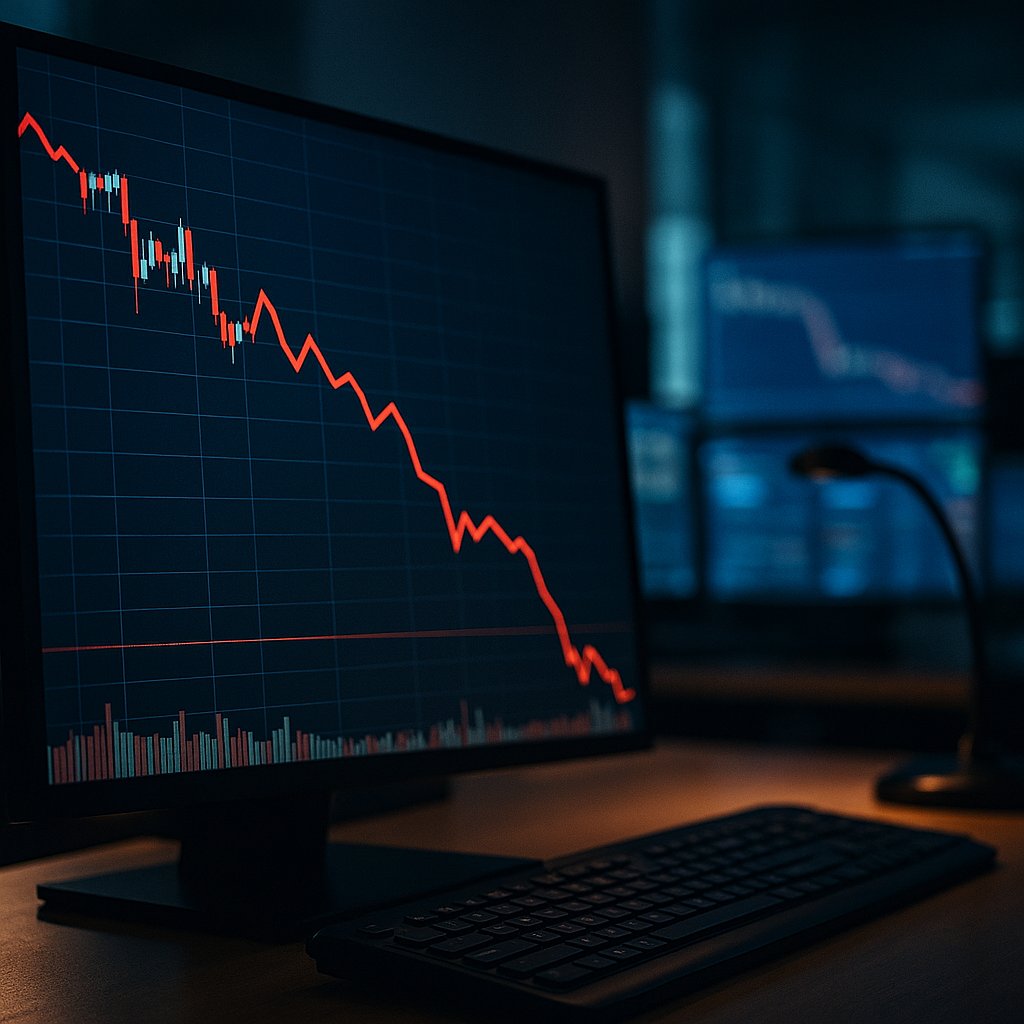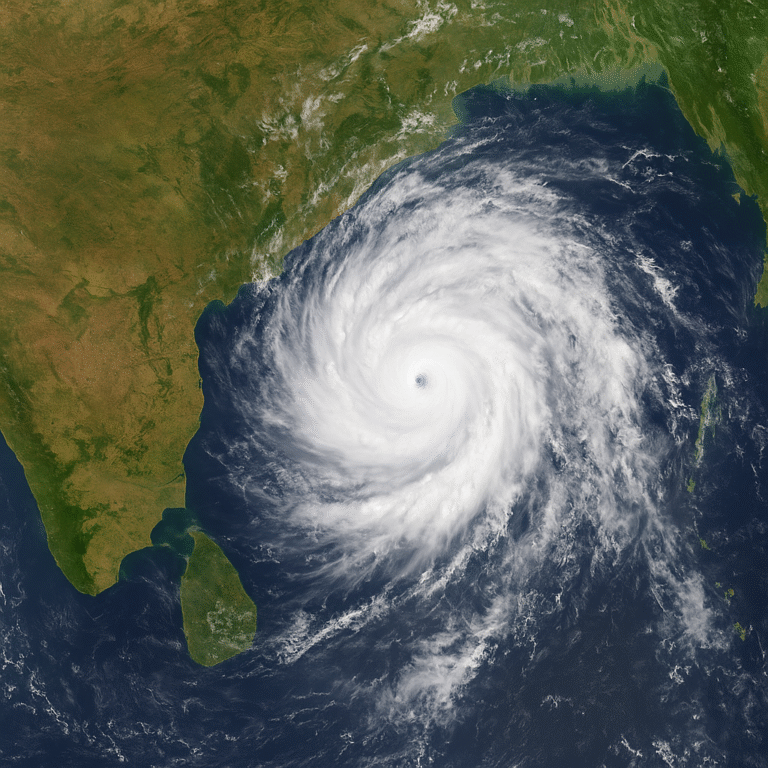
Introduction
The Indian Renewable Energy Development Agency (IREDA), a government-owned non-banking financial institution, recently announced its Q1 FY26 results, triggering sharp market reactions. While the company showcased impressive loan growth and strong interest income, a substantial decline in net profits and a spike in non-performing assets (NPAs) sparked a sell-off in its stock. This article provides a thorough professional analysis of IREDA’s recent financials, share price behavior, strategic developments, risks, and investor outlook.
1. Share Price Movement: Pre-Earnings Optimism and Post-Earnings Drop
1.1 Before Results: Investor Optimism Builds
Ahead of the Q1 FY26 earnings release, IREDA’s stock price witnessed a modest rally. Investors were optimistic, thanks to positive macro indicators and policy support for green energy, especially after the Indian government approved tax-exempt status for IREDA’s bonds. This significantly enhanced the attractiveness of its debt instruments, boosting investor confidence.
The share price climbed nearly 3%, closing around ₹170.10 on the Bombay Stock Exchange. Market sentiment was buoyant, with expectations of strong earnings performance driven by higher loan disbursements and revenue growth.
1.2 After Results: Sharp Correction Follows Disappointment
The optimism, however, was short-lived. Following the Q1 earnings announcement, IREDA’s stock fell sharply by over 6% in intraday trading, touching lows of around ₹159.05. The drop was triggered by a steeper-than-expected fall in net profit and a deterioration in asset quality.
This marked a shift in market tone—from growth enthusiasm to concern over credit quality and provisioning expenses. The reaction underscores the importance of financial discipline and effective risk management, even for companies riding high on thematic tailwinds like renewable energy.
2. Q1 FY26 Results: Growth in Revenue, Decline in Profit
2.1 Total Income Growth Impresses
Despite the headline profit decline, IREDA posted strong top-line growth. Its total income rose to ₹1,947 crore during Q1 FY26, up nearly 29% year-on-year from ₹1,510 crore in the corresponding period last year. This performance was driven primarily by higher disbursements and strong interest income.
Interest income alone surged from ₹1,483 crore to ₹1,909 crore—a 29% year-on-year jump. The rising demand for green energy project financing contributed significantly to this growth.
2.2 Profit Plunges: PAT Drops 36% Year-on-Year
Despite strong revenue, IREDA reported a steep 36% decline in net profit. Profit After Tax (PAT) fell from ₹384 crore in Q1 FY25 to ₹247 crore in Q1 FY26. Sequentially, the decline was even sharper—over 51% lower than Q4 FY25’s profit of ₹502 crore.
The company attributed the profit slump to higher provisioning requirements and rising expenses. These results have led to short-term concerns over IREDA’s profitability sustainability.
3. Rising Operating Expenses and Provisions
Operating expenses rose significantly during the quarter. Total expenses surged by 60% year-on-year to ₹1,655 crore, compared to ₹1,035 crore in the year-ago period.
Key reasons for the rise include:
-
Higher finance costs
-
Increased employee benefit expenses
-
Foreign exchange losses
-
Sharp increase in provisions for NPAs
While income rose, the surge in costs more than offset the gains, resulting in a compression of profit margins. The company will now be under pressure to rein in its costs, especially in the context of the rising cost of capital.
4. Credit Risk: Deteriorating Asset Quality
4.1 Gross and Net NPA Ratios Spike
One of the most concerning metrics in the Q1 FY26 report was the rise in bad loans. Gross Non-Performing Assets (NPAs) spiked to 4.13%, up significantly from 2.45% at the end of the March 2025 quarter. Similarly, Net NPAs rose from 1.35% to 2.05%.
This increase signals a worrying deterioration in the quality of IREDA’s loan book, which has otherwise grown steadily over the past few years.
4.2 The Gensol Exposure
The spike in NPAs is partly attributed to IREDA’s exposure to Gensol Engineering Ltd. The company had extended around ₹470 crore in loans to Gensol—comprising both term loans and working capital.
Following alleged irregularities, including potential document falsification and misuse of funds, IREDA filed a complaint and initiated recovery through the National Company Law Tribunal (NCLT) and the Debt Recovery Tribunal (DRT). The company also invoked guarantees worth over ₹80 crore.
This episode has cast a spotlight on IREDA’s risk management practices and has eroded investor confidence in the company’s credit appraisal systems.
Also Check : Glenmark Pharma Hits New Highs After Landmark AbbVie Deal: A Comprehensive Analysis
5. Share Price Technicals and Trends
IREDA’s share price has been highly volatile over the last six months. After hitting a 52-week high of ₹310 in mid-2024, the stock saw a correction, dropping as low as ₹137 in March 2025. The recent rally saw it climb back to the ₹170 zone before the earnings release triggered another drop.
From a technical perspective:
-
Support is seen around ₹150–₹130 range
-
Resistance lies near ₹185–₹190
-
RSI and momentum indicators suggest a neutral-to-bearish short-term outlook
Analysts believe any sustained breakdown below ₹150 could lead to further downside unless the company addresses asset quality concerns decisively.
6. Strategic Positioning: Government Support & Sector Relevance
IREDA plays a vital role in India’s clean energy mission. As a government-owned non-banking financial company (NBFC), it provides critical funding for renewable energy projects—including solar, wind, hydro, biomass, and transmission infrastructure.
The company’s designation as a “Navratna” public sector undertaking enhances its credibility and reinforces its strategic importance.
Additionally, the recent government move to grant tax-exempt status to IREDA’s bonds significantly boosts its ability to raise low-cost capital. This also helps diversify its funding base and reduce reliance on expensive market borrowing.
7. Business Metrics and Growth Performance
Despite recent profit setbacks, IREDA continues to show strength in its core business operations.
-
Loan Disbursements grew by ~31% year-on-year
-
Loan Book Expansion reached ₹80,000 crore, up ~26.5%
-
Interest Coverage Ratio remains healthy, though tighter than in previous quarters
These figures demonstrate that demand for green financing remains robust. The long-term secular growth story for IREDA remains intact, provided it can clean up its balance sheet and manage risk more efficiently.
8. Valuation Metrics and Financial Ratios
As of the latest reporting period, IREDA’s stock trades at the following estimated metrics:
-
P/E Ratio: ~29x (price to earnings)
-
P/B Ratio: ~4.2x (price to book)
-
Market Cap: ₹45,000–47,000 crore range
-
ROE (Return on Equity): ~18%
-
ROCE (Return on Capital Employed): ~9.6%
-
Dividend Yield: Nil
These valuation multiples place IREDA among premium-priced financial stocks. However, the absence of dividends and the recent profit dip could weigh on sentiment unless growth and credit quality rebound strongly in coming quarters.
9. Analyst Sentiment and Market Outlook
9.1 Bullish View
Optimists highlight IREDA’s central role in India’s renewable push, its robust loan growth, and strong revenue visibility. They argue that the stock’s current dip may present a buying opportunity, especially around technical support levels.
9.2 Bearish View
Bearish analysts point to the steep profit decline, ballooning NPAs, and questions around loan quality. They caution that without clear communication and action on credit risk management, the stock may face more downward pressure.
Consensus suggests a “wait-and-watch” approach is prudent until the company demonstrates improved execution in risk containment.
10. Strategic Priorities Moving Forward
For IREDA to restore investor confidence and sustain its long-term momentum, the following strategic actions are crucial:
-
Credit Quality Restoration
Resolve the Gensol issue decisively, initiate timely recovery measures, and enhance borrower risk assessment. -
Improved Profitability
Control costs, reduce provisions, and sustain interest income growth to stabilize profit margins. -
Strengthen Governance and Transparency
Enhance disclosure around loan monitoring, risk mitigation, and operational safeguards. -
Leverage Policy Tailwinds
Maximize benefits from tax-free bonds, new capital inflows, and government-driven green energy financing schemes. -
Diversification of Loan Portfolio
Broaden lending to newer renewable verticals such as green hydrogen and energy storage to reduce concentration risk.
11. Long-Term Outlook
Despite the current volatility, IREDA remains well-placed to benefit from India’s rapidly growing renewable energy sector. As the country targets 500 GW of non-fossil fuel capacity by 2030, financing needs will multiply—and IREDA is poised to be at the center of this shift.
However, this opportunity must be balanced with responsibility. The company must prioritize asset quality, investor communication, and operational integrity. If executed effectively, IREDA can evolve into one of the most trusted green finance institutions globally.
12. Final Investor Takeaways
| Aspect | Observation |
|---|---|
| Short-Term Outlook | Volatile, range-bound between ₹130–₹185 |
| Medium-Term Drivers | Resolution of NPAs, Q2 earnings, bond issuance |
| Long-Term Thesis | Green finance leader with large runway |
| Valuation | Premium-priced; execution must justify it |
| Risk Factors | Credit quality, provisioning spikes, sentiment |
| Investment Stance | Cautious buy-on-dips for long-term investors |
Conclusion
IREDA’s Q1 FY26 results have delivered a reality check for investors. While its top-line growth remains solid, the sharp drop in profits and rise in NPAs highlight the need for improved credit discipline. The company’s ability to clean up its balance sheet and reassure the market on risk controls will determine the next leg of its journey.
With supportive government policies, an ever-growing demand for renewable financing, and a solid operational foundation, IREDA has a promising future—but only if it strengthens its internal systems and protects stakeholder trust. The road ahead is bright, but not without challenges. Investors would be wise to stay informed and watch the next few quarters closely.



